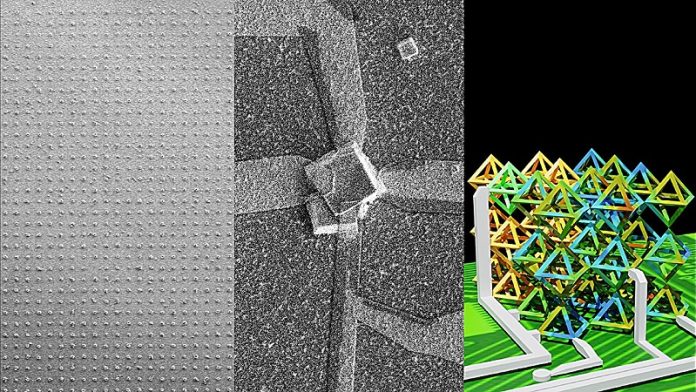
In an exciting breakthrough, scientists at Columbia Engineering have figured out how to use DNA to build tiny 3D electronic devices that can assemble themselves.
This new technique could make future electronics much smaller, smarter, and more powerful—especially for advanced technologies like artificial intelligence.
Current electronic devices are mostly flat, with 2D circuits.
To make devices more powerful, researchers have been looking for ways to build electronics in 3D.
Three-dimensional designs can fit more components into a smaller space, just like stacking shelves in a small room.
But making 3D electronics has been difficult and expensive using traditional manufacturing methods, which slowly carve out shapes from materials in a “top-down” process, similar to sculpting.
Now, scientists have found a new “bottom-up” method, inspired by how nature builds things. Instead of carving, they use strands of DNA to form the base structure.
DNA, the molecule that carries our genetic information, is made up of four building blocks—A, T, C, and G—that naturally stick together in specific pairs.
By carefully designing the order of these letters, researchers can make DNA fold into special 2D and 3D shapes, similar to origami. These shapes then come together like puzzle pieces to form larger 3D structures, called “frameworks.”
In the new study, the researchers first placed tiny gold squares on a surface and attached short pieces of DNA to them.
These acted like anchors. They then added specially designed DNA pieces that folded into eight-sided shapes called octahedrons. These DNA shapes automatically linked together to form 3D scaffolds in specific spots, guided by the gold anchors.
Next, the team worked with researchers from the University of Minnesota to turn these DNA scaffolds into real electronic parts.
They coated the DNA with silicon oxide and added a material called tin oxide, which is used in semiconductors. Electrodes were then connected, creating tiny light sensors that could detect and respond to light—proving that the self-assembled 3D structures actually worked as electronic devices.
“This is the first time we’ve used DNA to build working 3D electronic parts that can be added to microchips,” said Dr. Oleg Gang, who led the research. “And we did it in a way that can be scaled up, with thousands of these structures placed in exact positions on a silicon chip.”
Looking ahead, the team hopes to use this method to build even more complex 3D circuits using different materials.
Their long-term goal is to make electronics that mimic the 3D structure of the human brain, which could greatly improve the power and performance of future AI systems.
Source: Columbia University.



